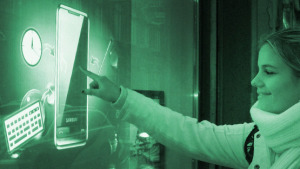This post shows the Lusens WayFinding Design Process.
Way Finding systems create a custom, immersive search experience that guests find compelling and comfortable, connecting them to retail, commercial and meeting spaces in a timely, intuitive and informative manner. On this blog, Way-Finding Design Process – a Project Planning Guide, we will try to focus on the main issues.
Integrating state of the art touch and gesture technology, LUSENS Way Finders not only guide people on their way, but also become a natural and integrated extension of the architectural environment, effectively communicating with your audience and enhancing your site’s identity and branding.
LUSENS Way Finders enable the delivery of unique messages using a robust, exciting and versatile interactive media platform that’s easy to update and modify. By providing a memorable visitor experience, you ensure that your guests will not only discover your site through interaction with it, but that the experience will translate into positive, engaging memories that they’ll share with friends, family and future visitors.
Following are some steps necessary to create a successful Way-Finding Design process:
DEFINING PROJECT SCOPE:
The design of a successful wayfinder requires the work of experts in user interface, 2d/3d way finding programming, creative and graphic design, software development, hardware designer and project management.
During the early stages of the project, the customer and supplier will reach an agreement regarding the scope of the project based on requirements and budget. At this stage, we will advise the customer of the expected costs and time frames, which will later be outlined in a formal proposal.
GATHERING INFORMATION
Prior to commencing the design of the way finding system, it is necessary to gather data about the site and specifically its physical design, mapping, points of interest, entry points, etc., as well as about the specific requirements of the Content Management System, which is an integral part of way finders since it allows the administrator to update the system as needed.
USER INTERFACE
Based on the site’s data, the design team will begin designing a customized experience that answers all the technical requirements identified in the previous steps and which blend with the site’s physical environment. This process is fluid and its success depends a great deal on steady communication between the developers and customers. At this stage, design decisions such as the use of 2D or 3D mapping, search engines, and other features are made.
SOFTWARE CODING
After the customer and design team agree on the detailed design plan, it’s time to start coding. It is at this stage that programmers and graphic designers begin creating the software and the content of the final experience.
QUALITY ASSURANCE
Once the system is designed it’s time to implement a comprehensive quality control program to ensure that all functions work well under various conditions.
ON-SITE INSTALLATION
With the successful completion of the development and quality control testing process, the system is installed on-site.
ONGOING SUPPORT
After the WayFinder is fully deployed on-site and all its functionality has been tested, the program enters the last phase which is on-going technical support which can either be on-site or on-line as per the customer’s preference.
